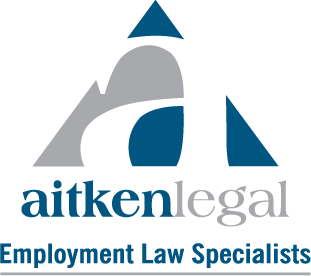EMPLOYMENT UPDATE
Jobkeeper 2.0 kicks off with new Legacy Employer Provisions
JobKeeper 2.0 takes effect from 28 September 2020
The Australian Government announced the introduction of the JobKeeper scheme in March 2020 to assist employers and employees significantly affected by the economic impacts of COVID-19 (JobKeeper 1.0). Due to renewed concern regarding the economic impacts and the spread of the Coronavirus, the Government announced in July 2020 that the JobKeeper payment was to be extended until 28 March 2021. On 1 September 2020, legislation to extend the JobKeeper scheme passed through Parliament, which included the extension of JobKeeper provisions in the Fair Work Act 2009 (Cth) (‘the Act’). The extended provisions took effect from 28 September 2020 and apply until 28 March 2021 (JobKeeper 2.0).
In addition to a two-tiered JobKeeper Payment Scheme being introduced (see our previous alert) another important change is the introduction of ‘Legacy Employer’ provisions.
A Legacy Employer under the Act is an employer who is not eligible for the JobKeeper Payment from 28 September, but meets the following legacy employer requirements:
- The employer must have been eligible for JobKeeper payments for the period prior to 28 September 2020; and
- The employer must demonstrate a decline in turnover of 10% or more for the designated quarter and must obtain a 10% decline in turnover certificate from a financial service provider (which we understand to be a qualified accountant, registered tax agent or BAS agent) for each relevant quarter.
A financial service provider must not issue a turnover certificate if the provider is a director, employee or an associated entity.
Of interest to Legacy Employers will be that they are still able to give JobKeeper Stand Down Directions (among other directions and agreements), but the nature of the Stand Down Direction that can be given by a Legacy Employer is different to that under the original JobKeeper Scheme.
Critically, Legacy Employers cannot issue a Stand Down Direction that results in a relevant employee working less than 60% of their agreed ordinary hours of work. The provisions also require consideration of whether the employee belongs to a ‘class of employees’ and prohibits a direction that reduces ordinary hours below 60% of the ordinary hours of that class of employee. The Legacy Employer provisions also place a ‘floor’ on the minimum hours to be worked on a given working day, with employees not able to be directed to work less than 2 hours on a working day.
An important change for a Legacy Employer is that they must provide an employee with 7 days written notice (as opposed to the previous 3 day period) before issuing a direction and they must comply with additional consultation requirements, including:
- providing the employee (or the employee’s representative) with specific information about the nature, timing and expected effects of the direction;
- inviting views and feedback about the proposed direction from the employee (or the employee’s representative);
- genuinely considering the employee (or employee’s representative) views and feedback; and
- keeping a written record of the consultation.
Significant penalties may apply if an employer gives a JobKeeper enabling direction under the JobKeeper 2.0 Legacy Employer provisions and they do not meet Legacy Employer criteria at the time of issuing the direction. Further, if, at a relevant time, a Legacy Employer is unable to satisfy the 10% decline in turnover test, all JobKeeper enabling directions or agreements made under the Legacy Employer provisions will automatically cease on the following dates:
- Where conditions not met for the September 2020 quarter – end on 28 October 2020; and
- Where conditions not met for the December 2020 quarter – end on 28 February 2020.
A Legacy Employer must provide an employee who has previously been given a JobKeeper enabling direction under the Legacy Employer provisions, written notice that the direction will cease and the date the direction will cease prior to the relevant test time. Civil penalties may apply where a Legacy Employer repeatedly fails to provide this written notice.
Where an employee who has previously been given a JobKeeper enabling direction, and that direction will not cease to have effect immediately after test time, the Legacy Employer must provide the employee written notice that the direction will not cease after test time. Again, civil penalties may apply where a Legacy Employer repeatedly fails to provide this written notice.
Legacy Employer obligations under JobKeeper 2.0 is definitely an area where employers should seek professional advice before issuing directions under the provisions.
Disclaimer: The information contained this article is general and intended as a guide only. Professional advice should be sought before applying any of the information to particular circumstances. While every reasonable care has been taken in the preparation of this update, Aitken Legal does not accept liability for any errors it may contain. Liability limited by a scheme approved under professional standards legislation.
